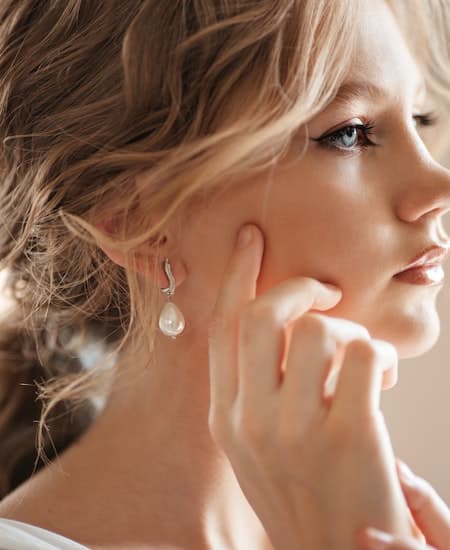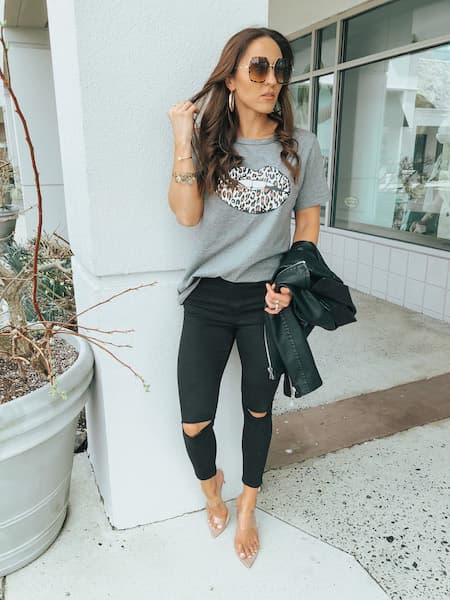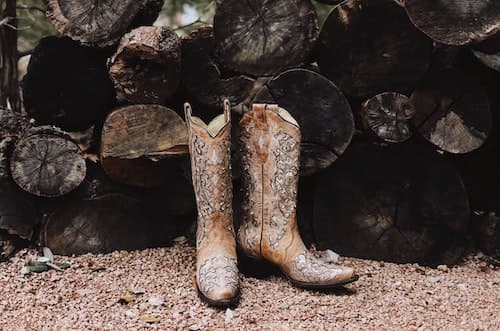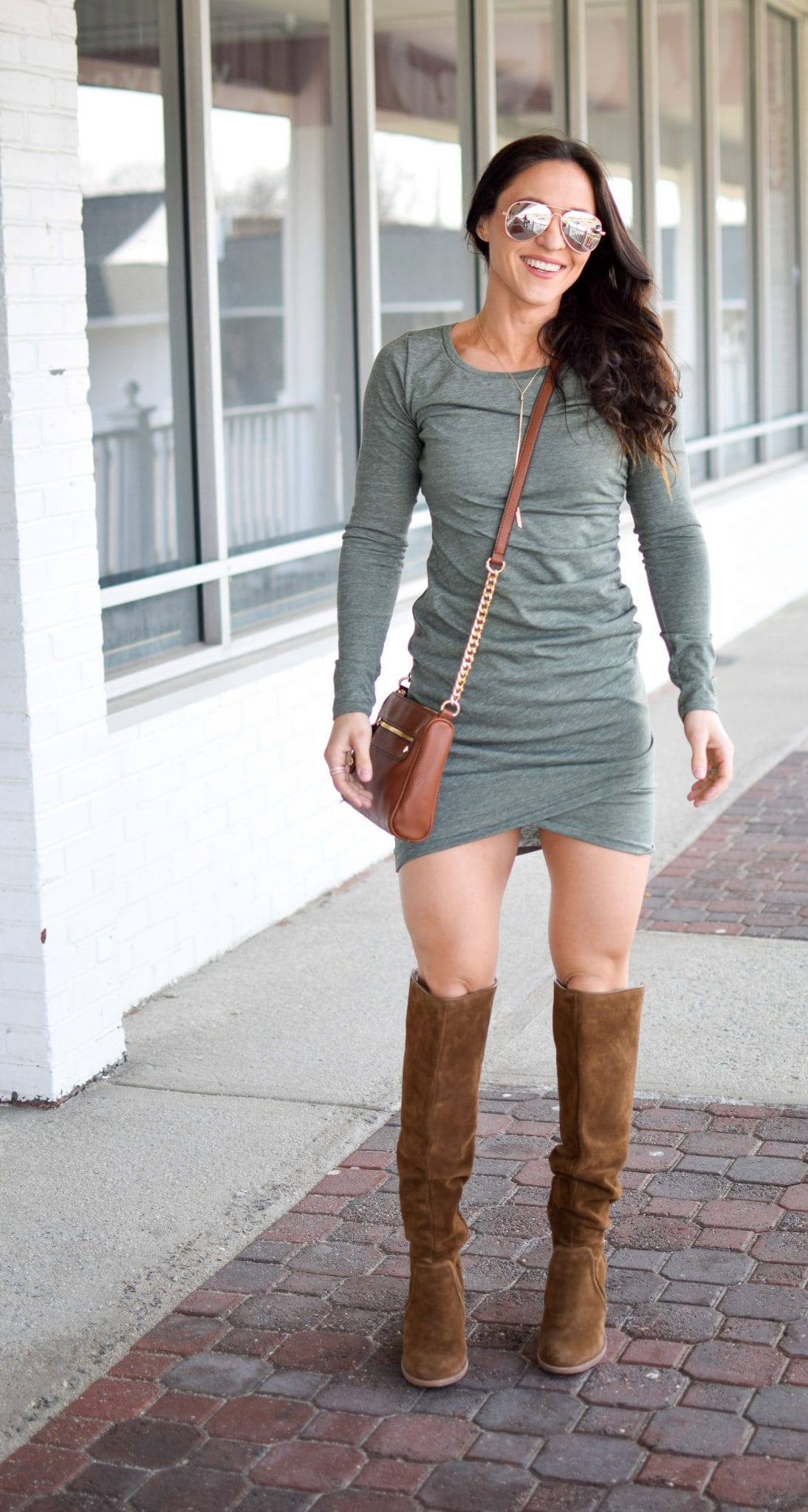Pearl Earring Sizes: The Ultimate Guide
Pearls are a timeless type of jewelry. They’re great for special events but also pair perfectly with everyday outfits as well.
Whether you’re wearing a pearl necklace, pearl stud earrings, small pearls, or larger pearls, this jewelry will always be a classic style. Pearls are great for women of all ages, with young girls typically wearing smaller sizes than young ladies and older women.
Pearl earrings come in several different pearl types and a variety of sizes. So how do you choose the right pearl earring size? We’ve put together all the information you need to answer this question and more about pearl jewelry.
Pearl Earring Sizes
Pearls come in different sizes and the range of sizes for each depends on the type of pearl. Pearl size is one of the main determinants of the value of a pearl. In other words, the larger the pearls, the more expensive they will be, no matter the type.
The size of the pearl depends on the type of pearl it is, but most pearls fall into or around the same range of sizes. Let’s take a look at the different pearl types and their typical sizes.

Cultivated vs Natural Pearls
It is extremely rare to find natural pearls that are actually commercially usable. That’s why almost all pearls that you find being sold today are cultivated pearls. Even if it isn’t listed as “cultivated” pearls, you can still assume they are cultivated.
Cultivated pearls are “planted” into a living oyster by humans, but they still have no control over what size, shape, or color they end up being.
Very large pearls are rare, therefore they are more valuable than smaller pears. The same goes for perfectly round pearls, which are also very rare.
Different Types of pearls
There are five main, or most common, varieties of cultivated pearls. While the sizes will be similar between these different varieties, the ranges are typically slightly different.
Some pearls can be found in much smaller or larger sizes than the most common sizes, but pearls of this size can be very difficult to find, which will make them much more expensive.
Akoya pearls
The Japanese Akoya pearl comes from the Akoya oyster and is a saltwater cultured pearl. These pearls are known for their perfectly round shape and their beautiful sheen, or luster.
These can start at 2.0 mm, which is considered a seed pearl, all the way up to 10 mm. The most common size range of Akoya pearls is 6.0 mm to 9.5 mm pearls.
Although it’s possible, it’s rare to find Akoya pearls below or above this range. If you do find them, they will be pricey.
Tahitian pearls
Tahitian pearls are considered the second most valuable pearls in the entire world. These pearls are black in color and are so shiny that they reflect light.
Black Tahitian pearls are a bit larger and can be anywhere from 8.0 mm to 16.0 mm and sometimes even larger. Most commonly, the mm range for Tahitian pearls is 9.0 to 13.0 mm.
Freshwater pearls
Freshwater pearls are the most affordable of the pearl varieties. These pearls are cultivated in freshwater mussels and are easier to extract than saltwater pearls.
Freshwater pearls can start as small as 4.0 mm and go up to 12.0 mm, sometimes even larger sizes. The most common range for freshwater pearls is typically 6.0 mm to 11.0 mm.
Larger sizes of this type of pearl can get expensive, but the smaller sizes are very affordable and therefore what you’ll see the most of when you’re shopping.
White and Golden South Seas pearls
Both of these pearls are known for being the largest pearls available worldwide. These pearls take much longer to cultivate, making them one of the most expensive types of pearls available as well.
Both white and golden South Sea pearls can range from 8 mm all the way up to 20 mm in size. The most common sizes you’ll find are 9.0 mm through 14.0 mm.
Choosing Pearl Earrings Sizes
Since there are such a variety of pearl mm size increments that you can get, let’s break it down into sizes and talk about which size works best for what and/or who. There is no definitive answer for who should wear which size and where.
Like many other instances in style, the size of pearls you wear is a matter of preference and the most important factor is your comfort. But if you’re looking for a pearl sizing guide, this will be helpful for making a good choice for you.
It can also be helpful if you’re considering pearls as a gift for someone else, so keep reading!

6-7 mm Pearl Earrings
6 mm pearl studs are perfect for young girls up to older teens. Young women as well as petite women with smaller facial features may find that the 7 mm is the perfect size for studs or dangle earrings as well.
The classic pearl stud earring is typically thought to be more of a status symbol the larger it gets. So women often want to size up regardless of their facial features and build.
Examples of 6-7 mm pearl earrings:
6.5 mm Freshwater Cultured Pearl Stud Earrings
6-7 mm Road Akoya Saltwater Cultured Pearl Dangle Earrings

7-8 mm Pearl Earrings
7.0-8.0mm size range pearl earrings are known as the classic size of pearl earrings and are the most popular sizes for both women and girls alike. These are considered a staple of any woman who likes a classic look.
These or the smaller 6-7 mm pearl earrings are both great for everyday wear and can be dressed up or down easily without looking out of place.
Examples of 7-8 mm pearl earrings:
7.5-8.0 mm Akoya Cultured Pearl Stud Earrings
7.5-8.0 mm Freshwater Cultivated Pearl Dangle Drop Earrings

8-9 mm Pearl Earrings
This next size up equates to medium-sized pearls and is perfect for that little black dress and a Jackie Kennedy Onassis pearl stud look. These are an iconic size that is considered elegant and sophisticated.
If you’re going for Jackie’s look, stick with white Akoya pearls. If you want to experiment with different colors, this is a great size to get into Tahitian pearls.
Examples of 8-9 mm pearl earrings:
8-9 mm Tahitian Cultivated Pearl Dangle Earrings
8.5-9.0 mm Japanese Akoya Cultivated Pearl Stud Earrings

9-10 mm Pearl Earrings
9-9.5 is the largest you’ll probably find in Japanese Akoya pearls so this is a sweet spot for that type of pearl. This size is a larger set of pearls and more expensive pearls than you might want to wear on a daily or regular basis.
The most common way to wear this size and larger is for special occasions. Of course, that is left totally up to preference.
Examples of 9-10 mm pearl earrings:
9.5-10 mm Freshwater Cultured Pearl Stud Earrings
9-10 mm Akoya Cultivated Pearl Stud Earrings

10-11 mm Pearl Earrings
10-11 mm are large and usually reserved for formal events. Large Tahitian black pearls make a great statement piece for a formal outfit.
This size also makes a perfect gift for someone like a new bride who has that special wedding coming up that is appropriate for bigger pearls like these.
Examples of 10-11 mm pearl earrings:
10-11 mm Tahitian Cultivated Drop Earrings
11 mm White South Sea Cultivated Pearl Stud Earrings

11-13 mm Pearl Earrings
Anything about 11mm pearl earrings is unmistakably luxurious. These are high-end sizes that you won’t see often and are definitely reserved for formal occasions.
These will be the most expensive sizes, no matter the type of pearl you’re considering.
Examples of 11-13 mm pearl earrings:
13-14 mm Freshwater Cultured Pearl Drop Earrings
11-12 mm Golden South Sea Cultured Pearl Dangle Earrings
Conclusion
Good quality pearls come in many sizes. There is no “right size”, so you should try out a few sizes before settling on the one you like the best.
Other Posts You Might Like:





